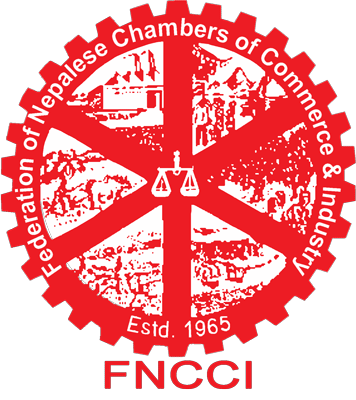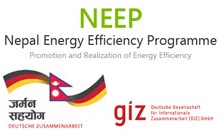Energy Saving potential
The soap industry stands on rank 7 in Nepal’s energy intensive industries. More than 5 % of product value accounts for energy cost (GIZ/NEEP, 2012). Energy saving potential for electrical and thermal are estimated to be 10% and 39%, respectively.

Figure 1: Energy cost on product value in % for different industrial sectors in Nepal (GIZ/NEEP, 2012)
It is estimated that soap units could save around 1,210 MWh of electricity and 149,334 GJ of thermal energy. By implementing energy efficiency the sector could achieve monetary savings of about 421 Lakh Nepalese Rupees annually (GIZ/NEEP, 2012).
Table 1: Energy Saving potential in Energy-intensive industrial sectors in Nepal (GIZ/NEEP, 2012)

Experience from the past have identified many options for improving energy efficiency in soap and other chemical industries that are highly profitable, most of them with payback periods of investment of less than 1 year. The following table shows some implemented examples option with the respected payback period (Danida/ESPS, 2005).
Table 2: Energy saving options for soap industry and payback period of investment (Danida/ESPS, 2005)

Energy Saving Tips
Huge saving opportunities in soap and other chemical industries can be achieved in the following areas:
1. Install delta to star convertors for lightly loaded motors
2. Install maximum demand controller to optimise maximum demand
3. Optimization of capacitor banks for maintaining the Power Factor at optimum level
4. Replace rewound motors with energy efficient motors
5. Install energy efficient motors as a replacement policy
6. Replace V-belts with synthetic flat belts
7. Minimising overall distribution losses, by proper cable sizing and addition of capacitor banks
8. Adoption of the Load Management System
9. Installation of Variable Frequency Drive (VFD) wherever applicable.
10. Load Optimization of Drive Systems (Shuffling of Drive System)
1. Use translucent sheets to make use of day lighting
2. Install timers for automatic switching ON-OFF of lights
3. Install timers for yard and outside lighting
4. Grouping of lighting circuits for better control
5. Replace 40 Watts fluorescent lamps with 36 Watts fluorescent lamps
6. Replace conventional ballast with high efficiency electronic ballasts in all discharge lamps
7. Install LED lamps for panel indication instead of filament lamps
8. Install CFL’s for lighting in non-critical areas, such as, toilets, corridors, canteens etc.
9. Optimise voltage in lighting circuit by installing servo stabilisers
1. Ensure air compressors are loaded to a level of 90%
2. Set compressor delivery pressure as low as possible
3. Monitor pressure drop across suction filter and after filter
4. Segregate high pressure and low pressure users
5. Avoid/ minimise compressed air leakages by vigorous maintenance
6. Replace old and inefficient compressors with screw or centrifugal compressors
1. Use cheaper fuel for high capacity DG sets
2. Increase loading on DG sets (maximum 90%)
3. Increase engine jacket temperature (max. 85 o C) or as per engine specification
4. Take turbocharger air inlet from outside engine room
5. Installation of steam coil preheaters for DG set fuel in place of electrical heaters
6. Replace multiple small size DG sets with bigger DG sets
1. Monitor excess air levels in boilers
2. Arrest air infiltration in boiler flue gas path, particularly economiser and air preheater section
3. Plug steam leakages, however small they may be
4. Always avoid steam pressure reduction through PRVs.
5. Insulate all steam and condensate lines
6. Monitor and replace defective steam traps on a regular basis
7. Monitor boiler blow down; use Eloguard for optimising boiler blow down
8. Installation of flash vessels for heat recovery from hot condensate vapours
9. Monitor the blow-down quantity of water in cooling towers and the quality of water
10. Install automatic combustion control system/ oxygen trim control system in steam boilers and soda recovery boilers
11. Install economiser/air preheater for boilers
12. Use of cheaper fuels, like bamboo dust, wood barks, pith etc.
13. Install boiler air preheater based on steam to enhance cogeneration
14. Install heat recovery from boiler blow down
1. Clean chillers and condenser coils regularly
2. Close doors to outside and unheated or un-cooled areas
3. Establish routine maintenance procedures
4. Regular cleaning and maintenance of condenser pipes
5. Regular cleaning of cooling tower to prevent algae formation.
6. Improvement of the Chiller
7. Minimization of refrigerant leakage
8. Preventive/ Scheduled Maintenance of the Plant and Machinery
9. Replacement of old traditional refrigerator system with efficient direct drive compressors and inverter based refrigeration system.
10. Installation of de-icing system in evaporators.
1. Replacement of Aluminium blades with FRP blades in cooling tower fans
2. Install dual speed motors/ VSD for cooling tower fans
3. Solar water heating for canteen and guest house
4. Avoiding pump operation by utilization of gravity head
5. Optimize capacity of vacuum pumps by RPM reduction.
6. Install high efficiency fans & blowers in boiler
References
GIZ/NEEP, 2012: Baseline Study of Selected Sector Industries to assess the Potentials for more efficient use of energy. Danida/ESPS, 2005: Cleaner Production report of Soap industry. Confederation of Indian Industry: Investors manual for Energy Efficiency. Central Bureau of Statistics (CBS), 2007: Census of Manufacturing Establishments carried out in the fiscal year 2006/07.



